



Featured image: External Transformations: Roberta’s Construction Chart, No. 1,from the series Roberta Breitmore, 1974–78
Choose Your Muse is a new series of interviews where Marc Garrett asks emerging and established artists, curators, techies, hacktivists, activists and theorists; practising across the fields of art, technology and social change, how and what has inspired them, personally, artistically and culturally.
Lynn Hershman Leeson artist and filmmaker, who over the last three decades, has been internationally acclaimed for her pioneering use of new technologies and her investigations of issues that are now recognized as key to the working of our society: identity in a time of consumerism, privacy in a era of surveillance, interfacing of humans and machines, and the relationship between real and virtual worlds. Her work was featured in “A Bigger Splash: Painting After Performance” at the Tate Modern London in 2012 and a retrospective and catalogue are being planned for 2015 at the Zentrum fur Kunst Und Medientechnologie, Germany. Modern Art Oxford is hosting a major solo exhibition of her work Origins of a Species, Part 2, and it’s open until 9 August 2015.
Lynn Hershman Leeson released the ground-breaking documentary !Women Art Revolution in 2011. It has been screened at major museums internationally and named by the Museum of Modern Art as one of the three best documentaries of the year.
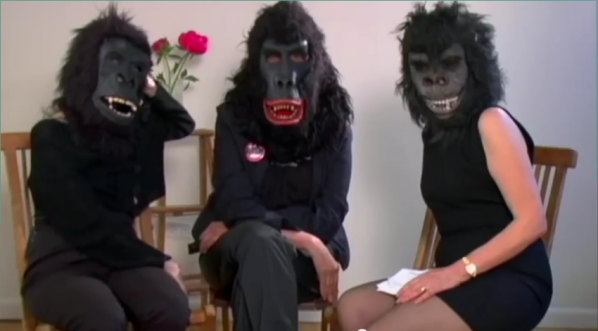
The image above is from !Women Art Revolution, which introduces the Guerilla Girls who draw attention to injustice and under-representation across artistic platforms and institutions. Several members discuss their origin story and modus operandi, including “the penis countdown. !Women Art Revolution won the first prize in 2012 at the festival in Montreal on Films on Art.
She also wrote, directed, produced and edited the feature films Strange Culture, Conceiving Ada, and Teknolust. All featured Tilda Swinton and were showcased at the Sundance Film Festival, Toronto International Film Festival and Berlin International Film Festival before being distributed internationally. After her retrospective, at CIVIC RADAR in December 2014, a bumper catalogue consiosting of 450 pages will be published in Oct 2015. Featuring writing by Peter Weibel, Laura Poitras, Tilda Swinton, Kristine Stiles, B Ruby Rich, Hou Hanru, Andreas Beitin, Peggy Phelan, Pamela Lee, Jeffrey Schnapp, kyle Stephan and Ingeborg Reichle. Civic Radar is now at Diechterhallen Falkenberg till November 19, 2015.
Marc Garrett: Could you tell us who has inspired you the most in your work and why?
Lynn Hershman Leeson: What has inspired me are people who work with courage to do original work that has a political and authentic ethic. These include, to name a few only, it seems a bit strange because naming them isolates these artists from the context of their contributions. But I have been inspired by Lee Miller, Mayakovsky, Tinguely, early Automata and so many more like Thomas Edison, Jules Etienne Marrey, even Cezanne. Early on I educated myself by copying works to get a sense of how particular artists formulated their language – the way Rembrandt used light, Leonardo’s draftsmanship and parallels he found between technology and science, Gauguin’s color reversals, Brecht, Breton and Duchamp’s ironic and iconic archetypal identities, Tadeauz Kantor, and Grotowsky’s extension of the frame.
Also younger artists (nearly everyone is) like Rafael Lezano Hemmer, particularly the work he is doing now in using facial recognition to locate kidnapped victims, Amy Siegal’s Providence, Janet Biggs, Annika Yi, Nonny de la Pena, Tania Bruguera, Ricardo Dominguez, and many many more.
![Lee Miller photographed women in fire masks in wartime London in 1944. [Source: Telegraph/Lee Miller Archives]](http://www.furtherfield.org/wp-content/uploads/2015/07/lee_miller_fire_masks_1944.jpg)
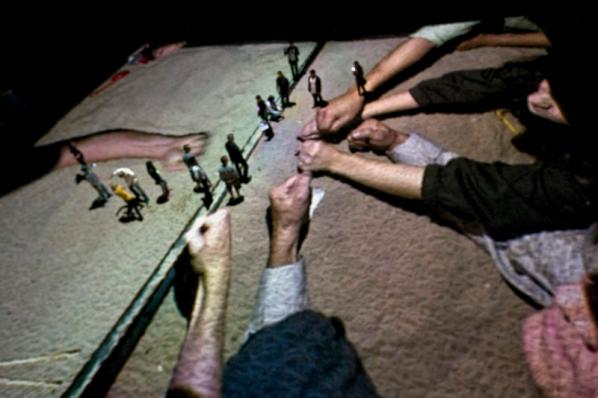
MG: How have they influenced your own practice and could you share with us some examples?
LHL: I think these examples added to my conceptual dimensional and historical overview which has been reflected in my practice. There are direct links also, like how the breathing machines and suicide machines relate to Tinguely, or how Roberta relates to Duchamp and Breton. But these are obvious and on the surface. The deeper perspectives embed themselves into the structure and architecture of the work. Political references like Civil Rights and The Feminist Movement are part of the core of the time I lived through and the resulting collage that is my work.
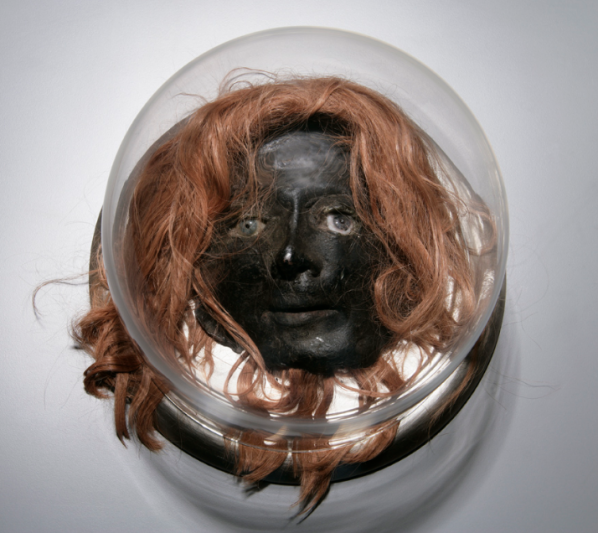
MG: How different is your work from your influences and what do you think the reasons for this are?
LHL: I think we all work in the time frame we are born into, and if we are lucky use the materials or invent the technologies to give presence and voice to the political gestures of that era. We cannot produce work from another era other than what we inhabit and really have to be in tune with the global framing of the tools and language invented during our life time.
MG: Is there something you’d like to change in the art world, or in fields of art, technology and social change; if so, what would it be? How would that happen?
LHL: Of course I would open up the process and systemic repressions, which would hopefully result in eradicating censorship, and the making more transparent the capitalistic underpinnings that are polluting access, value and visibility. In the 70’s, I did the first prison art project in San Quentin, and many early public art works geared toward social change, and it just required fortitude and clarity that resulted in breaking down systems of perceived values.
MG: Describe a real-life situation that inspired you and then describe a current idea or art work that has inspired you?
LHL: Well, hearing about Steve Kurtz’s predicament and the unfairness of it caused me to make the film Strange Culture. I personally experienced exclusion and rejection – as did many women, and that inspired !Women Art Revolution. I think work comes out of awareness of the situations of one’s time.
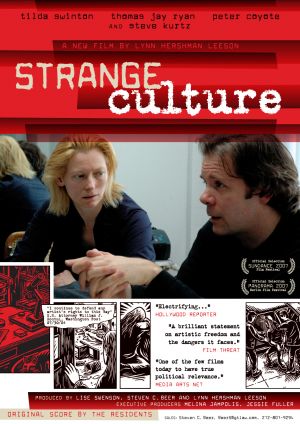
Steve Kurtz’s nightmare began on May 11, 2004, when he awoke to find his wife Hope dead of a heart attack. Police responding to his distressed 911 call became suspicious of scientific paraphernalia in his house (materials for an art project on genetically modified food) and contacted the FBI. Soon his world was turned upside down. Only hours after his wife’s tragic death he was suddenly a murder suspect, an accused bioterrorist, and a pariah to all but his closest friends.
The film is told through a unique blend of interviews, documentary footage, and reconstructed scenes starring Tilda Swinton, Thomas Jay Ryan, and Peter Coyote, Hershman’s critically-acclaimed film is a sophisticated, look at how the traumatic events of 9/11 altered American society and undermined its long-held values. [1]
MG: What’s the best piece of advice you can give to anyone thinking of starting up in the fields of art, technology and social change?
LHL: Stay true to your vision, forge ahead no matter what the obstacles are and keep your sense of humor.
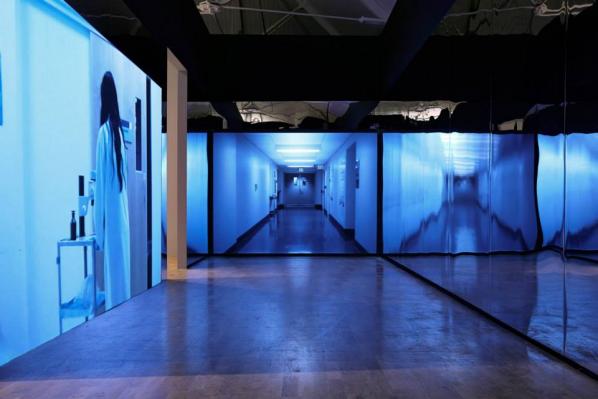
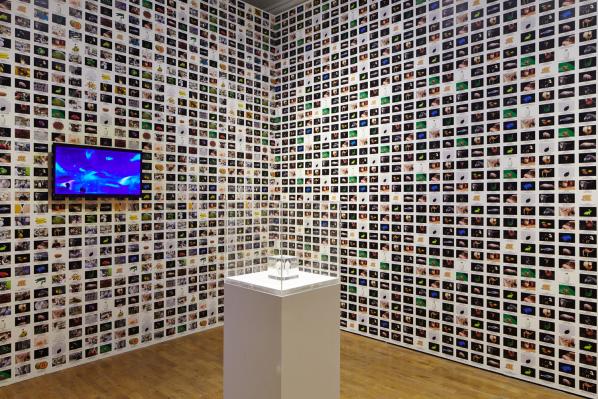
“Ms. Hershman Leeson continues to use art as an advance warning system in new work, developed with scientists, that focuses on, and participates in, the phenomenon of genetic manipulation. The show’s most recent piece is an installation of wallpaper made from images of hybrid animals, plants, and human limbs created through DNA manipulation, regenerative medicine and 3-D bio-printing. It looks great in the gallery, and like much of this artist’s work, it takes both ethics and aesthetics in ungraspable directions.”[2]
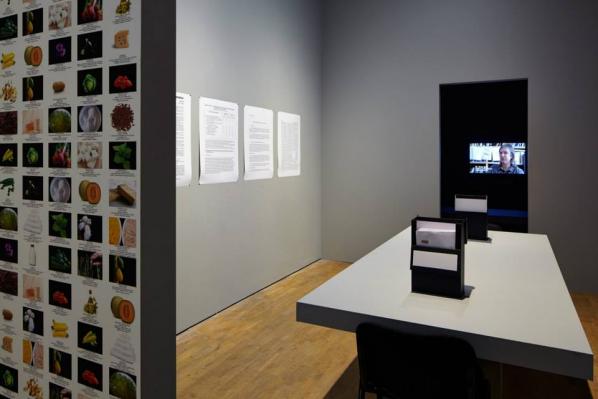
MG: Finally, could you recommend any reading materials or exhibitions past or present that you think would be great for the readers to view, and if so why?
LHL: The Art and Technology show in MdM at Salzburg, my exhibition and catalogue for The Burden of Guilt. The Electronic Super Highway and catalogue coming up at Whitechapel next year. Recommendations for catalogues: !War Graphic Novel, Marshal McLuhan, Rebecca Solnet’s River of Shadows, Edweard Muybridge and the Technological Wild, Kristine Stiles: States of Mind, Peter Weibel: The Global Contemporary and the Rise of the New Art World, and so many others. I also think for instance that James Watson’s Double Helix is beautifully written. So many possibilities for educating one’s self exist.
Furtherfield Gallery is pleased to host One Minute Volume 8, a new series of shorts curated by filmmaker Kerry Baldry. The screening is accompanied by One Minute Remix pt. 2, a selection of moving images from One Minute Volumes 1-7.
SEE IMAGES FROM THE PRIVATE VIEW
Please share your one second short too – for a collective one minute short video #1sv we need 60 videos before it 23rd November @furtherfield on Twitter and Instagram
Contact: info@furtherfield.org
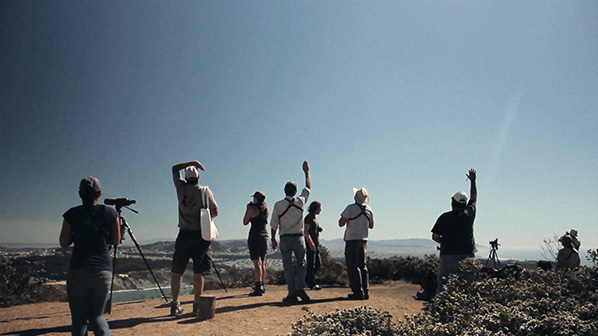
One Minute Volume 8 is the latest in the series of programmes of artists’ moving image compiled/curated by artist filmmaker Kerry Baldry.
Previous programmes (Volumes 1 – 7) have been screened around the world, showing in galleries and spaces such as hotel rooms in Hong Kong, warehouses in Sydney, shopping centres in Leeds, barns in The Snowdonia National Park through to international museums, film festivals and art galleries.
The One Minutes contain an eclectic mix of approaches, techniques, media and processes, all having one thing in common – that they have been edited within the time limit of 60 seconds.
Screening alongside One Minute Volume 8 is a specially edited One Minute Remix for Furtherfield Gallery which includes work by artists in the previous programmes.
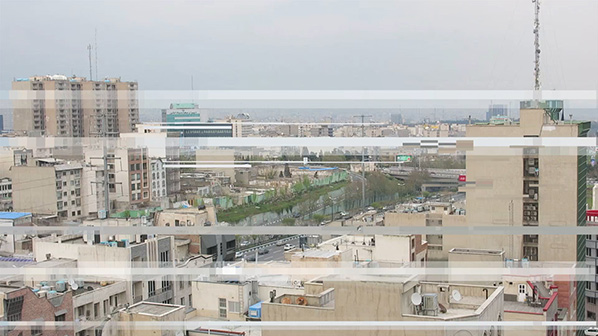
Paul Rooney, Nicky Hamlyn, Claire Morales, Nick Jordan, Gordon Dawson, Sana Ghobbeh, Tony Hill, Alex Pearl, Sam Meech, Greg Pope, Kayla Parker and Stuart Moore, Philip Sanderson, Martin Pickles, Guy Sherwin, Olga Jurgenson, Kerry Baldry, Tansy Spinks, Sam Renseiw, Katherine Meynell, Philippos Kappa, Kelvin Brown, Chris Paul Daniels, Stuart Pound and Rosemary Norman, Julia Dogra-Brazell, Marty St. James, Shaun Hay, Virginia Hilyard, Eva Rudlinger, Louisa Minkin, Steven Ball, Kate Jessop, Zhel (Zeljko Vukicevic), Riccardo Iacono, Karen Densham, Mary Stark, Nicolas Herbert, Michael Szpakowski, Max Hattler, Steven Woloshen, John Kippin, Daniela Butsch, Leister/Harris
Laure Prouvost, Guy Sherwin, Nick Jordan, Gordon Dawson, Nicki Rolls, The Gluts, Emily Richardson, Tina Keane, Marty St. James, Katherine Meynell, Catherine Elwes, Tony Hill, Kerry Baldry, Alex Pearl, Martin Pickles, Louisa Minkin, Stuart Pound, Phillip Warnell, Steven Ball, Lynn Loo, John Smith, Nick Herbert, Chris Meigh Andrews, Kayla Parker and Stuart Moore, Mark Wigan Williams, Anahita Razmi, Lumiere et Son, Riccardo Iacono, Alexander Costello, Eva Rudlinger.
http://oneminuteartistfilms.blogspot.co.uk/
Kerry BaldryKerry Baldry is an artist/filmmaker who works in a range of media including film and video. She is a Fine Art Graduate from Middlesex University who went on to study film and video at Central St. Martins. Her first commissioned film was to make a film for BBC2’s One Minute Television which was broadcast on The Late Show – a joint collaboration between BBC2 and Arts Council England.
Over the last 7 years, aside from producing her own work, she has been curating, promoting and distributing a self initiated, unfunded project titled One Minute, One Minute Volume 8 being the latest in the edition. One Minute Volumes 1-8 are an eclectic mix of artists moving image constrained to the time limit of one minute and includes over 80 artists at varying stages of their careers.
Furtherfield Gallery
McKenzie Pavilion, Finsbury Park
London N4 2NQ
T: +44 (0)20 8802 2827
E: info@furtherfield.org
Produced by Furtherfield. Furtherfield Gallery is supported by Haringey Council and Arts Council England.
Featured image: Screenshot of Apodemy by Katerina Athanasopoulou
Eva Kekou interviews Katerina Athanasopoulou about her film Apodemy commissioned by The Onassis Cultural Center on the theme of Emigration for Visual Dialogues 2012, and her hybrid art practice of live action, animation and film. In 2013 Athanasoppulou won the Lumen Prize, described by the Guardian as “The World’s Pre-eminent Digital Art Prize”. She works as an Animation Director, collaborates with other artists and companies, and is an Animation Lecturer at the London College of Communication.
What is your background and what brought you to London?
I studied Painting at the School of Fine Arts of Aristotle University in Thessaloniki. My work involved large canvases painted in a serendipitous way, building layers, erasing and restarting, seeing where my lines were going to take me. I was frustrated by the stillness of the final piece, longing to recreate the gesture in time that had created it. At the same time, I was passionate for cinema and animation so I tried it out in my own computer at home. In a way, I discovered animation for myself, as there was no film nor digital element in my course. That meant that there was no right and wrong way to go and it was such a joy to be producing moving images, to be able to finally paint in time! My first films were digital cutouts and manipulated live action. The big change came when I arrived in London in 2000 to do an Animation MA at the RCA, where suddenly completely new creative possibilities appeared. Short film festivals were also a source of great inspiration, places to meet like-minded filmmakers and watch films all day long.
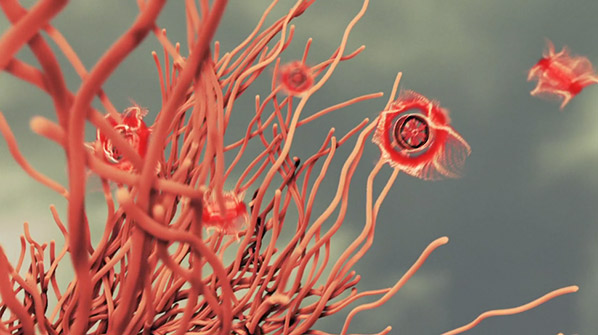
What’s the effect of English education in your work and in the way you appreciate art?
When I became a student in the UK, I was at the same time delighted and terrified by the informality of the teacher-student relationship, like addressing your tutor by their first name. I was really impressed by the enthusiasm for research and for the creative journey itself. Process becomes a major part of the work and that frees you from concentrating only on the outcome. I saw how Animation can be enlisted in very different ways, from a more commercial manner to very left-field experimental practices so that was an exciting new point of view for me. At the same time, the early 2000s were a time of conflict between analogue and digital practices – which of course has not quite gone. As an educator myself, I love the intensity of the way that students debate their work, so the English system of education still very much inspires me.
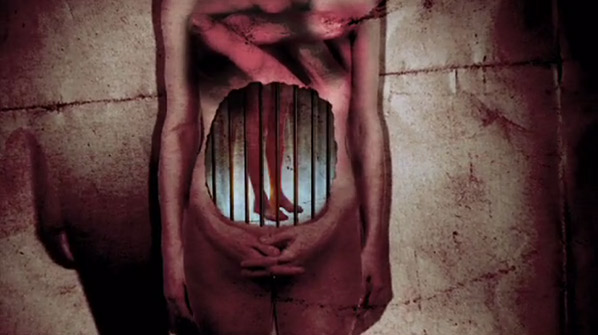
What was your creative practice up to the Lumen Prize.
Since 2002 I have been making short experimental films that have been screened in film festivals and galleries, my process being one of playfulness and embracing chance. I like to try out different ways of creating moving images, and I try to make each film follow a different road, even though it’s very tempting – and at times fruitful – to revisit old concepts. In the last three years I have developed a big interest in Architecture and how that can be depicted in time, through 3D, 2D and live action. Animation for me is Alchemy, I combine elements together, in textured space and time and see what happens. These experiments some times involve diving into live action that I have captured on location, and other times are about creating that space digitally.
Animation Installation is a field I’m fascinated by at the moment, devising ways of materialising the digital element, of making it even more about light and shadow. My latest film, Triptych 1, was made especially for the facade of the Museum of Contemporary Art in Zagreb and reimagines it as built of interconnecting corridors.
Talk to us about the theoretical and philosophical background of Apodemy.
Apodemy was commissioned by the Onassis Foundation (Stegi) on the theme of Emigration and the Economic Crisis. It was to be part of an Art Show in an old archaeological park in Athens, called Plato’s Academy Park, where the philosopher is believed to have taught. The title of the Installation was Visual Dialogues so I was drawn to Plato’s Dialogues where I discovered the metaphor of the human soul as a birdcage. I was very keen to instil in the work philosophical elements related to the space itself. With migratory birds being one of my initial ideas about the piece, the solution of a travelling birdcage in an abandoned half-finished city became apparent. The marble arms were part of Plato’s birdcage metaphor, where he describes how, as we grow up we fill our mind/birdcage with ideas/birds. When we need to recall something, we put our hand in the cage and grab a bird. I imagined those hands to be aggressive, so they became statue fragments carried by cranes that eventually mar the trolley cage’s journey. Theo Aggelopoulos inspired me with his images of a Lenin statue traversing the river and of a single arm, floating accusingly yet innocently. In times of political upheaval we like to break down our past heroes, in an attempt to cleanse ourselves of mistakes. Only that sometimes those past leaders still come back to haunt us.
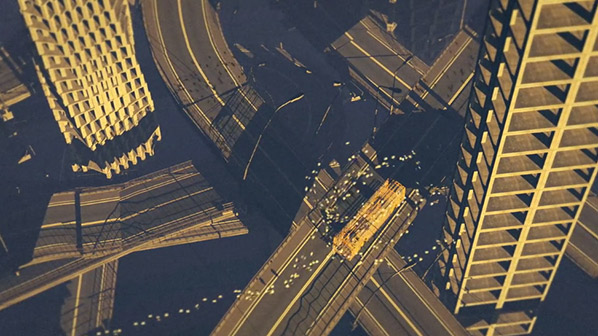
What techniques did you use?
I designed the city on the computer in 3D and then started to drive cameras inside it, discovering it on the road, like I was exploring a real landscape. The film was built like a documentary, following the migration journey of a cage that is also a trolleybus, the yellow kind that I was riding in Athens when – in the late nineties – everything was promising.The construction industry ground to a halt when the crisis took hold so, today, many buildings remain unfinished and look like birdcages themselves. After the City was built, I started making the birds and the bus. Then I moved it inside the city, following a broken road which eventually leads to the fall. The entire film developed through trial and error, it was my first 3D film and I had limited time and resources. But restriction breeds creativity and, in the two months that I had to complete it, I tried to make a film designed in a minimal but impactful way.
What does the Lumen Prize mean to you and how can such a recognition make a difference in your work and life?
Winning the Lumen Prize was a great honour, especially amongst so many great works from entirely different platforms. The prize revolves around fine digital art and encompasses film, installations, interactive work, print, sculpture, collage. Amongst such a plethora of forms, it meant a lot that Apodemy was awarded, both in terms of my digital animation practice, but also as it’s a film that’s about the collapse of my country of origin. The Lumen Prize show has already been to New York and will also be part of the Digital Symposium at Chelsea College of Art and Design in March, as well as in Hong Kong in June. It’s wonderful that Lumen is propelling the film further forwards, and it’s been great to meet some of the other artists involved. Seeing the works by Nicolas Feldmyer, Kalos&Klio, Margarita Koulikourdi, Vasileios Chlorokostas and others has been very inspiring.
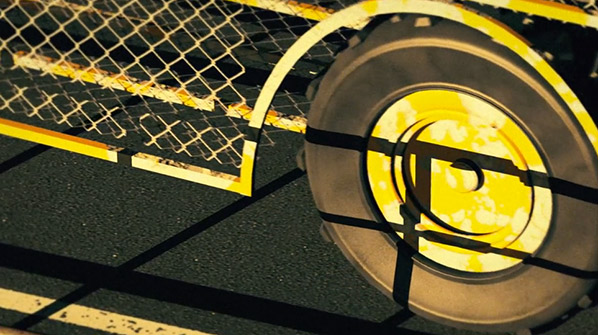
What draws you to animation?
Through cinema, we immerse ourselves in different waters, achieving a kind of immortality. One could argue that also happens whilst reading, or listening to music – yet somehow film combines literature and poetry and music too and almost all the senses get involved. What’s more interesting for me is the connection between moving image and the imagined: it’s almost like we dream other people’s visions and we physically try to make that disconnection from reality by favouring watching films in dark rooms. The cinema I’m interested in is one of spectacle, that transforms reality into a surreal play, that explores light and shadow and looks for monsters under the bed. At the same time, I’m currently very curious about taking animation off the screen and applying it in space, by projecting rooms, objects, corners. For me, there’s no greater magic than instilling life in the inanimate and create moving worlds that don’t depend on cameras and actors – what’s in your head can be made real, a real that’s still beautifully elusive and chimeric, that doesn’t contain all the answers but asks exciting questions.
What are your future plans?
I have been working on an experimental narrative of an obsessive mother that cocoons her children, which may work as a single screen work or perhaps as an installation that includes a film. I’m also researching the Architecture of Melancholy, which lies somewhere between cabinets of curiosities and abandoned homes. I always have several experiments on the go, it’s really about finding the right time and opportunity to commit to a project. As delightful as animation is, it takes time to complete, but it also means that ideas may have time to mature and not be rushed. As long as my ideas keep me entangled, I’m happy.
See Katerina Athanasopoulou’s work online at kineticat.co.uk
Public Screening and Discussion at Furtherfield
Contact: info@furtherfield.org
Visiting Information
THE EVENT HAS LIMITED AVAILABILITY.
PLEASE RSVP TO BOOK YOUR PLACE TO ALESSANDRA
Cornelia Sollfrank will present her latest film Giving What You Don’t Have. It features interviews with individuals Kenneth Goldsmith, Marcell Mars, Sean Dockray, Dmitry Kleiner, discussing with Sollfrank their projects and ideas on peer-to-peer production and distribution as art practice. It includes the projects ubu.com or aaaaarg.org, which combine social, technical and aesthetic innovation; they promote open access to information and knowledge and make creative contributions to the advancement and the reinvention of the idea of the commons.
The post-screening discussion will be led by Cornelia Sollfrank, Joss Hands & Rachel Baker.
On the basis of the interviews of Giving What You Don’t Have, we would like to discuss some of the issues they represent such as new forms of collaborative production, the shift of production from artefacts to the provision of open tools and infrastructures, the development of formats for self-organisation in education and knowledge transfer, (the potential and the limits of) open content licensing as well as the creation of independent ways of distributing cultural goods. An implicit part of Giving What You Don’t Have is a suggested reconceptualization of art under networked conditions.
Cornelia Sollfrank is a postmedia conceptual artist and interdisciplinary researcher and writer. She studied painting at the Academy of Fine Arts in Munich and fine art at the University of Fine Arts of Hamburg (1987-1994). Since 1998 she has taught at various universities and written on issues in the nexus between media, art and politics. In 2011 Sollfrank completed her practice-led interdisciplinary research at Dundee University (UK) and published her PhD thesis with the title Performing the Paradoxes of Intellectual Property. In addition to her work in the artistic and academic fields, Sollfrank gathered experience in the private sector by working as product manager for Philips Media for two years (1995-1996).
Joss Hands‘ research engages the relationship between media, culture and politics. His recent work has explored the role of digital media in direct action, protest and activism, culminating in his book @ is For Activism: Dissent Resistance and Rebellion in a Digital Culture, published by Pluto Press in 2011. His previous research has explored the role of new media in formal democracy and governance as well as its cultural, economic and social impact. He has published in a number of journals such as Information, Communication and Society, Philosophy and Social Criticism and First Monday as well as writing commentary for publications such as Open Democracy, IPPR Journal, The New Left Project, and others.
Rachel Baker is a network artist who collaborated on the influential irational.org. Her art practice explores techniques used in contemporary marketing to gather and distribute data for the purposes of manipulation and propaganda. Networks of all kinds are “sites” for Baker’s public and private distributed art practice, including radio combined with Internet (Net.radio), mobile phones and SMS messaging, and rail networks. She has presented and exhibited work internationally at various new media and electronic art festivals.
Giving What You Don’t Have is an artistic research project commissioned by the Post-Media Lab, Leuphana University.
Furtherfield Gallery
McKenzie Pavilion, Finsbury Park
London N4 2NQ
T: +44 (0)20 8802 2827
E: info@furtherfield.org
Furtherfield Gallery is supported by Haringey Council and Arts Council England.
Sat 19 – Sun 20 January 2013: One Minute Volume 1-2
Sat 26 – Sun 27 January 2013: One Minute Volume 3-4
Sat 02 – Sun 03 February 2013: One Minute Volume 5-6
Contact: info@furtherfield.org
In partnership with 20-21 Visual Arts Centre, Furtherfield Gallery is pleased to host One Minute Volumes 1-6 curated by the film-maker Kerry Baldry over three consecutive weekends in January and February 2013. The programme will also be shown at 20-21 later in 2013.
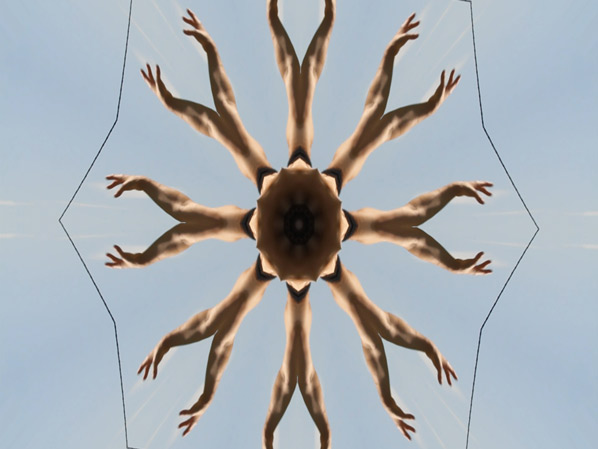
One Minute Volumes 1-6 are an eclectic mix of artists moving image constrained to the time limit of one minute and include over 80 artists at varying stages of their careers.
The artists involved range from established figures, such as Guy Sherwin and Catherine Elwes, to comparative newcomers through a multinational roster of those in between; and the methods deployed and content treated of are hugely diverse, a master class in the very short form film.
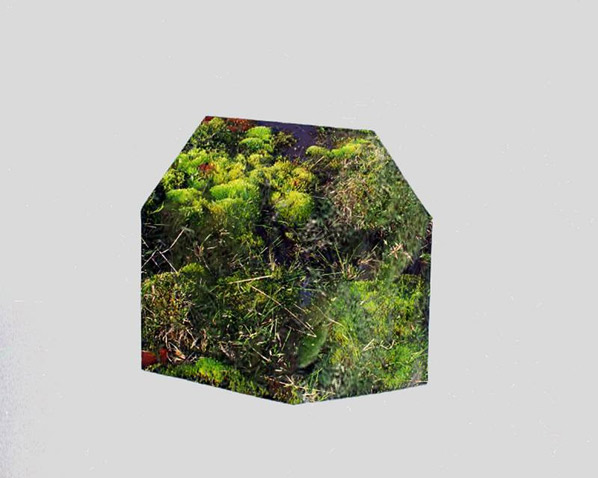
Gabrielle Schwartz writes in a recent review in Varsity, a Cambridge University publication:
‘There was no way of knowing what is going to come next; only that (while it might be beautiful, it might be funny, it might be incredibly weird) either way, it would be finished in a minute’s time – and so you might as well wait and see. This element of expectation as well as the consistently thought-provoking and entertaining quality propelled me through the volume, never once resulting in boredom’.
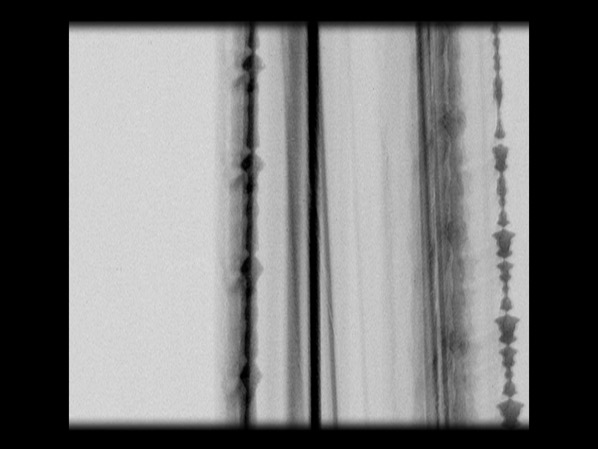
FACT in Liverpool, Artprojx Space – London, Directors Lounge – Berlin, London Underground Film Sessions – Horse Hospital, London. National Museum of Contemporary Art, in Bucharest, Plymouth Arts Centre, S1 Artspace – Sheffield, The Hull Short International Film Festival, Castlefield Gallery – Manchester, Peloton Gallery – Australia
Chris Meigh-Andrews, Kerry Baldry, Steven Ball, Kelvin Brown, Rose Butler, Daniela Butsch, Samantha Clark, Callum Cooper, Michael Cousin, Chris Paul Daniels, Gordon Dawson, Claudia Di Gangi, Fil Ieropoulos and Lilly Zinan Ding, Ron Diorio, Annabel Dover, Catherine Elwes, Clint Enns, Andy Fear, Unconscious Films, The Gluts, Dave Griffiths, Leister/Harris, Steve Hawley, Nick Herbert, Tony Hill, Virginia Hilyard, Elizabeth Hobbs, Riccardo Iacono, Hilary Jack, Tina Keane, David Kefford, Deklan Kilfeather, Kate Jessop, Nick Jordan & Jacob Cartwright, Esther Johnson, Helen Judge, Hollington & Kyprianou, Bob Levene, Barry Lewis, Lynn Loo, Paulo Menezes, Katherine Meynell, Louisa Minkin, Claire Morales, Kayla Parker and Stuart Moore, Jonathan Moss, Simon Payne, Alex Pearl, Gary Peploe, Martin Pickles, Stuart Pound, Laure Prouvost, Anahita Razmi, Emily Richardson, Nicki Rolls, Barbara Rosenthal, Jennifer Ross, Edwin Rostron, Matthew Rowe, Eva Rudlinger, Sam Renseiw and Philip Sanderson, Alex Schady, Janine Schneider, Margie Schnibbe, My Name Is Scot, Erica Scourti, Guy Sherwin, James Snazell, Tansy Spinks, Marty St.James, Priya Sundram, Michael Szpakowski, Richard Tuohy, Zhel (Zeljko Vukicevic), Phillip Warnell, Liam Wells, Mark Wigan, Michael Woody, Eleni Xintaras, Juan Zamora.
http://oneminuteartistfilms.blogspot.co.uk/
Produced by Furtherfield and 20-21 Visual Arts Centre.
Kerry BaldryKerry Baldry is an artist/filmmaker who works in a range of media including film and video. She is a Fine Art Graduate from Middlesex University who went on to study film and video at Central St. Martins. Her first commissioned film was to make a film for BBC2’s One Minute Television which was broadcast on The Late Show – a joint collaboration between BBC2 and Arts Council England.
Over the last 6 years, aside from producing her own work, she has been curating, promoting and distributing a self initiated, unfunded project titled One Minute, One Minute Volume 6 being the latest in the edition. One Minute Volumes 1-6 are an eclectic mix of artists moving image constrained to the time limit of one minute and includes over 80 artists at varying stages of their careers.
Furtherfield Gallery
McKenzie Pavilion, Finsbury Park
London N4 2NQ
T: +44 (0)20 8802 2827
E: info@furtherfield.org
Furtherfield Gallery is supported by Haringey Council and Arts Council England.
Furtherfield presents Moving Forest 500 Slogans workshop at Victoria & Albert Museum.
Join AKA the Castle for up to 5 slogan workshop sessions, December 2nd-4th at the V&A, as part of Moving Forest London 2012 initiative.
The Moving Forest 500 slogans workshop invites writers, artists, performers, theatre practitioners, soundists, noisers, singers (of all genres), scholars and folks to come together to contribute their readings of the 500 slogans written by Dr Matthew Fuller alongside Graham Harwood’s 12 hour rendering of the final 12 minutes of Kurosawa’s film version of Macbeth, Spider Web Castle.
Read, recite, sing, shout, scream, murmur, memorize and burn the slogans and plot the 500 slogans as the main thread through the 5 acts of MOVING FOREST.
Moving Forest is a 12 hour, five act, visual, sonic, digital, electronic and urban performance collectively realized by AKA the Castle, a temporal performance troupe bringing together visual artists, writers, soundists, silk threaders, codedecoders, macromikro, boombox mass, mobile agents, wifi fielders and urbanites. 12 hours of sonic, coded action map an imaginary Castle and camouflage forest revolt onto a given modern day metropolis.
We welcome public participation in Moving Forest 500 slogans workshops.
By participating, you join AKA the Castle’s collective reading and planning towards staging Moving Forest 12 hour performance in London summer 2012.
Please sign up below to take part in one or more workshop sessions.
Friday 02 December, 6-9pm
Saturday 03 December, 11-1pm
Saturday 03 December, 2-4:30pm
Sunday 04 December, 11-1pm
Sunday 04 December, 2-4:30pm
All workshops will take place in Seminar Room 1, Sackler Centre, V&A.
To sign up to one or more sessions please write to now@movingforest.net
or select your session on the 500 slogans wiki
http://scrying.org/doku.php?id=500slogans
Free workshop admission.
Victoria and Albert Museum
Seminar Room 1, Sackler Centre
Cromwell Road, London SW7 2RL
http://www.vam.ac.uk/
Additional workshop activity at SPACE as part of Moving Forest London 2012 initiative
More info: http://spacestudios.org.uk/whats-on/events-projects/moving-forest-pd-pure-data-workshop
More information about Moving Forest:
http://www.movingforest.net
http://movingforest.net/html/slogans.html
The partners for Moving Forest London workshop development are MA Interactive Media & Centre for Cultural Studies at Goldsmiths University of London, Furtherfield, SPACE, Digital Programmes,V&A.
Playing Hard: Urban Art Games of Summer 2010.
Not long ago, urban games were a kind of novelty. Some grew out of the street performance tradition of live theater. Some came from gamers who were involved in tabletop RPG and wanted to experiment with live reenactment. Others were produced by media artists as a way of experimenting with new technologies like GPS and text messaging. But along with these approaches to play, and at times learning from their carefree attitude towards entertainment, there grew another tradition of the urban game, a tradition of using the city focusing on exploration, and as a specific kind of critique. At its worst, the artist produced street game replicates of hollow self-promotion, through corporate, sponsored seasonal festivals. But just as experimental art can involve an analysis of mainstream art, the urban game can embody a palatable critique of the routines of city systems, including the deadening routines of metropolitan life and some of the large scale mechanisms of corporate capitalism.
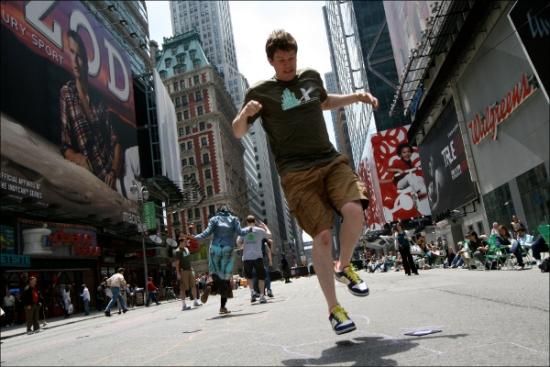
These kinds of games echo the spirit of the Situationist International, which called on artists to create alternate experiences through the construction of situations, psychogeography, and the use of play as a form of critical thinking. Urban games can also remind us of Hakim Bey and his idea of a Temporary Autonomous Zone by using goals, rules, and play with the creation of the ‘magic circle’, a world inside a world, as a method of directing public imagination towards an alternative presence, a way of acting and existing as an independent community within a larger, more repressive reality, even if only momentarily. Urban games also continue the Fluxus idea of the ‘happening’, a participatory media form in which audiences support artists, moving beyond the role of observers of performance to become collaborators in events. With the urban games season about to begin, this review takes a look at how several groups, either consciously or at times not so consciously, have interpreted these traditions for summer 2010.
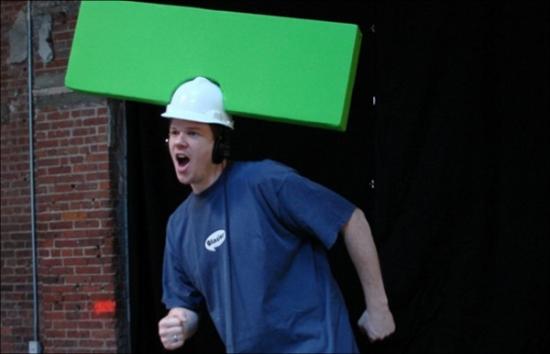
In New York, the much loved Come Out and Play Festival will run from June 4th through June 6th, with events scattered throughout the city borough of Brooklyn. Games include playground mods, GPS exploits, extreme sports, narrative quests, and massively multiplayer scavenger hunts. The festival hosts about forty game designers from around the world and about two thousand people will attend. Executive producer Greg Trefry says COaP strives to be entertaining and is not so much concerned with philosophy as it is with place: “Where the festival is located each year is actually really important to us. We look for interesting parts of the city to experiment on and use as the stage for the festival. So we’ve played everywhere from big anonymous urban areas like Times Square to now more family oriented locales like Park Slope.”
Still, the designers of COaP seem to have a way of engulfing serious issues with comedy and encouraging people reclaim neglected parts of the city by giving them a second look. Along these lines, Atmosphere Industries of Toronto will present Gentrification, a game that picks up on Brooklyn’s ongoing housing conflicts by asking players to assume the roles of real estate developers or neighborhood locals while collecting properties and gentrifying neighborhoods. Meanwhile, Gnarwhal Studios of Baltimore will sponsor ‘Humans vs. Zombies’, a modification of the playground game tag that introduces large groups of strangers to one another by sending players out into the city as the walking dead.. It’s hard to sit in a park, completely shut off from everyone around you, during a two hundred person simulation of a zombie attack. Also part of COaP, New York’s Crux Club will confront community fears of toxic contamination through their game ‘It Lurks in Gowanus’, a hide-and-seek mod that asks participants to track down a creature who has ominously escaped from legendary pollution of the neighborhood’s Gowanus Canal.
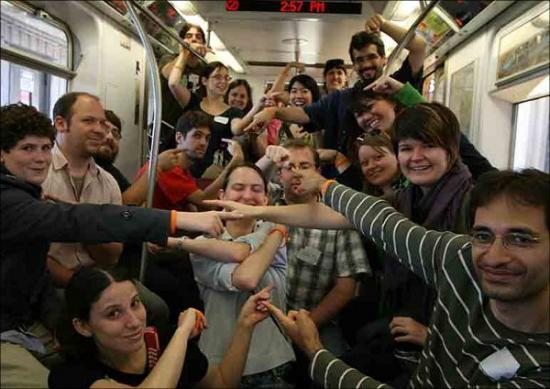
Although he agrees that all urban game events take some kind of cue from historical antecedents like the Situationist International or Fluxus, producer Trefry resists making a formal connection between these movements and COaP. Instead, he says, the main concern was and continues to be community building, getting people together in a surprising way and in an unexpected space: “At its heart, the festival is about running around outside and having fun with your friends. It sounds silly, but that’s such an amazing thing to experience.” This goal of community building has caused COaP to inspire other urban games festivals, including the Hide & Seek Festival in London and the igFest in Bristol, and the Steel City Games Fest in Pittsburgh. The organized versus the random, or the juxtaposition of the carefully designed structure of a game with the largely unstructured, seemingly arbitrary activity of ordinary public space continues to be a common interest among COaP design groups, which are likely to include engineers, academics, and urban planners alongside artists and actors.
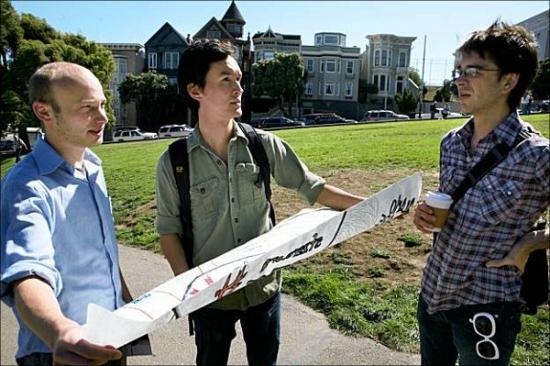
In San Francisco, the artists of SFZero cite Situationism and Fluxus as fundamental to their practice. The SFZero collective was founded by Ian Kizu-Blair, Sam Lavigne, and Sean Mahan in January 2006. Initially, the group used something like a Fluxus process of writing instructions for happening-like events that teams of other players acted out. Soon, these collaborations became the basis for both an online community and real world urban games network that now include over five thousand players. Through the SFZero website, participants initiate events by challenging other participants to ‘Eat a food that frightens you’, or ‘Go to a street corner of your choosing and wait for something fantastic to happen.’ SFZero seems to agree with classic Situationist objectives. A good game shifts awareness, Kizu-Blair says, changing the city for the people who play: ‘Oftentimes the players report that they have a completely different experience of the urban environment as a result of playing and go to places in their city where they have never been before. There is a cinematic quality whereby players live out experiences that normally exist only in spy movies – chases down dark alleys, chance meetings, etc.’ Typical SFZero tasks range from exploring overlooked locations in the city to taking a chance on meeting new people.
As fantastic as some of these instructions sound, and as important as the Internet is to SFZero’s success, Kizu-Blair says it is essential that some productions have a real world component: ‘As people become disenchanted with eight plus hours per day of screen time, they are increasingly gravitating towards hybrid activities that bridge the space between the virtual imaginary and the physical real world. These activities blend the safety and simple pleasure of screens with the risk, tension and excitement of physical interaction. More and more, members of our society will seek to escape from escapism towards an ethics of action, to escape from movies to real experiences. They will find that they have little idea how to have real experiences after their time in the imaginary. SFZero is the transition. ‘SFZero offers both real-world excitement and eternal return to the screen, to re-live, re-experience and re-imagine your engagement with reality.’
Recently, Kizu-Blair, Lavigne, and Mahan have begun staging riskier, more elaborate game events like ‘Journey To the End Of Night’, in which runners try to make it through six checkpoints on foot or by public transportation, while avoiding capture by chasers. An early version of Journey actually opened the 2006 season of Come Out and Play. This July, the veteran SFZero player Lincoln will stage a further production of Journey in Los Angeles.
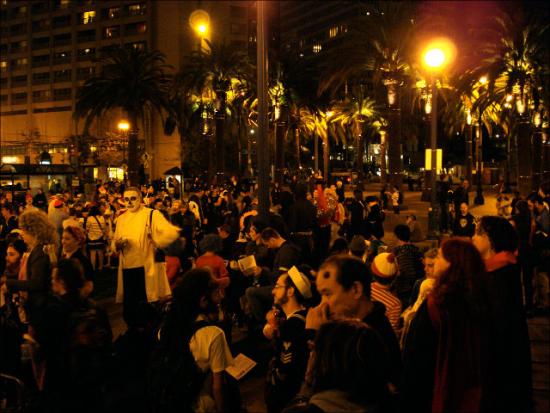
This summer, SFZero will present The Wanderers Union, a game that is loosely based on a French style of self-supported long-distance cycling called randonneuring. To perform Wanderers Union, players get a set amount of time to travel on foot and by public transportation through a series of zones. The idea is to create a single holistic experience of a urban area. The journey intends to juxtapose city spaces in ways that reveal meanings that might otherwise remain unobserved. Players who complete all of the events will progress from an initial four hour wandering to a final twenty-four hour wandering. By using play as a means of gaining understanding, participants will hopefully gain a small degree of mastery over urban space. Kizu-Blair says: ‘It’s like a video game – you level up and gain powers – but you have the added satisfaction of doing something real, and you can include anyone in the experience.’
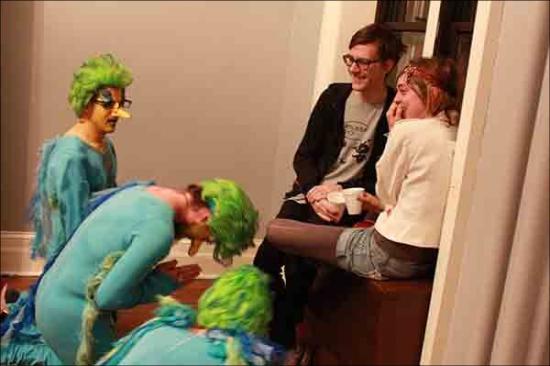
Back on the East coast, the New York based artist’s collective Opt-In found that what started as a thesis project for an experimental film class unexpectedly became a series of multimedia events that now includes filmmakers, fine artists, dancers, performers, and musicians. Titled ‘ZeroDay Exploits’, these evenings are the work of Bryn Jackson, Sarah Lerner, and Nathaniel Barker, who says the group has adapted the Fluxus concept of “happening” to the 21st century: ‘We create immersive environments in which strangers and friends can form new communities around a project, an idea, or a simple good time. We bring people from all walks of life together by promoting open dialogue and the creative expression of public discourse through a vast array of mediums and the use of public space.’
Past themes for the Opt-In exploits have included faith and technology. This July, the group plans to explore the idea of “home” by inviting guest artists and guests to contribute items and materials that evoke a sensation of home. The goal of this event is to create a sense of rootedness in New York, a city of perpetual resettlement. Another major goal for Opt-In is the deconstruction of the digital experience through live performance. According to Barker: ‘Our focus has always been on participation, so our events offer multiple means for encouraging visitors to get their hands dirty including music, secret actors to stimulate conversation, inclusive performances, and free art materials for spontaneous art creation.’
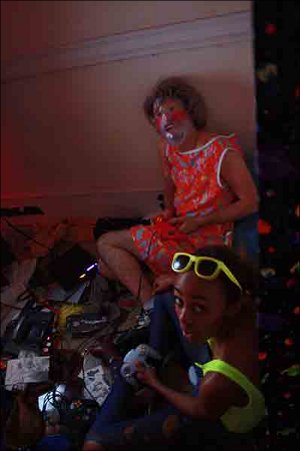
Also related to Fluxus, but in a gesture that seems more directed towards the Brazilian director Augusto Boal, a group calling themselves Invisible Playground Berlin, uses the urban game as a kind of political visualization. Founded by the artist known as Sebastian Quack Sebastian, this group’s interests lie at the intersection of theater and digital gaming. In ‘F Be I, See I A’, Invisible Playground re-enacted peer-to-peer communication as a giant game of urban capture the flag. Later, in Space Station Escape, the group simulated the release of an alien virus inside a phantom space station supposedly docked underground beneath Alexanderplatz.
Sebastian views missions and rule sets as ‘experience systems’, Games are a kind of participatory appropriation, an interrogative code that is placed over or enacted within an existing urban mechanism. In other words, if you want to get people to think more critically about the way immigration works in your city, you’d design a game that plays with the existing locations, activities, and mechanisms of immigration. In this way, Invisible Playground intends to put forward what otherwise goes unnoticed, tolerated, or is even passively accepted. Sebastian is careful to structure his rule sets in ways that highlight the power structures that arise between groups of players, between players and their environments, or between players and organizers. According to the Schwellenland site: ‘Players must work together and against each other. Over SMS and email you are guided to appointments and arrive at places where you were barred from entry until now. The game asks you to decipher who is legal, who is questionable, who can be trusted, who will trust you, who observes you, what should be ignored, what is critical. You are accompanied by a coach and by referees who left the usual national borders behind long ago and are now in Vienna as refugees without papers. These specialists can help you to master the challenges of being from a developing country. But they have also power to turn on you if you make too many errors.’

Finally, with a practice based in both New York and in Brazil, Adriana Varella is one of the artists behind the AnarkoArtLab, a collective of new-media, visual, dancers and genre benders in residence at the Living Theatre. Each month, Anarko creates a multimedia event that runs as part lab, part performance. This summer, the group plans to become mobile and to bring the Lab to different situations and neighborhoods. ‘We are searching,’ Varella says ‘for a last trace of that most ephemeral and elusive state where only a dusty dystopian haunting may yet remain. ‘Of course,’ Varella says, ‘all of them, Dada, the Situationists, Fluxus they are all our ancestors.’
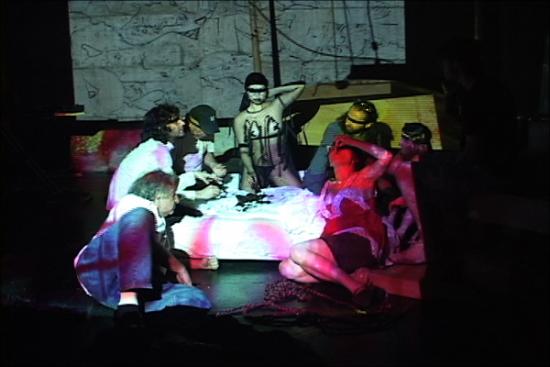
“All my life people have been telling me I was unique and then I saw myself on camera and realised I was – there is only one me! The film was a great achievement.”
Participants: 20 Year 4 students from Southwark Park Primary School.
Artist: Michael Szpakowski (video artist, composer and facilitator)
The Investigators followed a group of Year Four children and their teacher through their science studies for an entire school year.
Michael Szpakowski and Furtherfield made a documentary film with the children from Southwark Park Primary that examines the investigative skills in Science. The project focused on developing the use of digital media within the classroom, and as a tool for learning that the children can use themselves. Around a framework of footage shot in lesson time and on trips out is assembled other material – creative writing and artwork by the young people as well as re-enactments and discussion of the lessons.
Partners: Creative Partnerships, A New Direction, Southwark Park Primary School
Seven years ago, or about two years before the invention of youtube, the editors of Tank Magazine saw the possibility of an internet platform dedicated to video art. Their response was tank.tv, an Internet site that is part moving image archive, part online gallery, and part cutting edge video art exhibition.
After a quick and painless registration, tank visitors can wander by artist through a catalogue of some of the best short films of recent time, including works by Ken Jacobs, Pipilotti Rist, Vito Acconci, Hans Ulrich Obrist, Guy Maddin, Jeremy Deller, and Saskia Olde Wolbers. This archive alone is enough to make tank.tv a cultural treasure. But about eight times a year, tank also puts up shows organized by theme, and here films by emerging artists like Claire Hope and David Blandy are featured alongside more established filmmakers and more recognizable names.
“The sole focus is on the work,” explains curator and creative director Laure Prouvost, who has been with the site since its beginning. Prouvost describes tank.tv as a completely open endeavor, one that supports experimentation by accepting submissions and curatorial proposals throughout the year: “We have worked to make tank.tv a collaborative platform over time and we’re still looking for ways to open our programme as much as possible.”
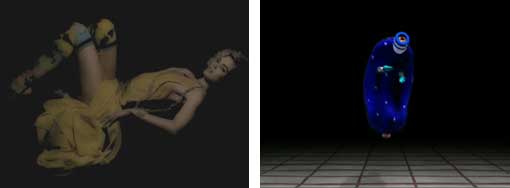
After running a series of solo shows in 2009, tank decided to finish the decade with the group show Open End. About twelve films were selected from the submissions tank.tv received throughout the year. Works by emerging artists received special attention. They include Just a Quiet Peaceful Dance by Dean Kissick, a rapid, flash cut montage that cascades in one smooth glide over its upbeat house track, and the dreamy, slightly disturbing 3D animation Your Uncertain Spirit by Jonathan Monaghan.
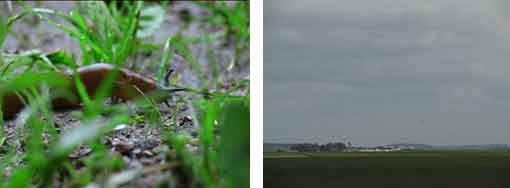
Each of these films were beautifully made and conceived, allowing a special kind of online engagement. In the lyrically photographed Momentary Seizures, Katja Aglert gives us an allegory of war and genocide through the life of a garden snail. Filmmaker Andrew Cross uses a single shot of the landscape as a meditation on time in his film Across. In Pulcera, Nicholas O’Brien uses a series of long takes to explore the relationship between image, gesture, and memory. Filmmaker Michael Fortune exploits the conventions of the reality television and the non-fiction form to make visible the relationship between custom, ritual, and community in We Invented Halloween.
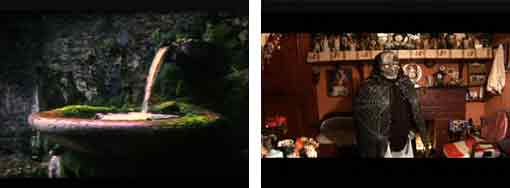
Not quite essay, but something more like the spirit of anti-narrative informs other films in Open End. Among these is Jon Purnell’s CackULike, which documents men in white linen invading the mass transit system, and Steven Eastwood’s self-reflexive and ironic examination of filmmaking in Seminar in Film and Sound.

Screengrabs: CackULike by Jon Purnell (left) and Seminar in Film and Sound by Steven Eastwood (right)
By deconstructing the war film genre, Matthew Johnstone manages a few genuinely harrowing moments in Modern Warfare, a film which combines aerial photography of a bombing run with routine and no-so-routine audio tracks depicting military training sessions. In Inadvertent Prose, filmmaker Mark Shorey distills noir down to its single essential moment of threat and violence.
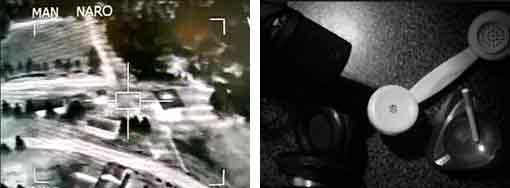
Animators are also represented. There’s the completely silly and kooky Conveyor-Iphone by Oliver Michaels, which just gets funnier and funnier as it runs its six minutes – really it is just wonderfully preposterous. Simon Woolham’s The Pile creates a mysterious and idiosyncratic relationship between an odd group of objects or states and their related sounds. In The Sausage Party #2, #D animator Michael van den Abeele pairs the evolution of a wire grid that slowly increases in complexity with the sound of a desolate, blowing wind.
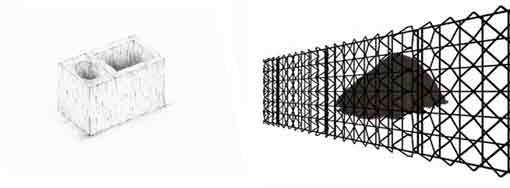
About twenty thousand visitors from sixty countries will see Open End. This is obviously good news for the filmmakers who show work here and audience reach is one of the main benefits of their being online. But tank curator Laure Prouvost sees additional benefits in internet exhibition: “Websites such as ours or UBU or LUX offer direct and fast access to work that would otherwise be very hard to view. It’s a fantastic way to get an introduction to an artist’s work. For us curating online gives us a lot of freedom – we have low overhead costs and can react very quickly.”
While the Internet will never replace the cinema or the gallery, Prouvost does point out its use as an extension of those spaces. As the quality of delivery improves, Prouvost believes the web will be used more and more as an introductory space for serious video art. If you watch films, a copy of Fresh Moves, the first DVD compilation from tank.tv can be ordered through tank.tv’s website.
If you make films, Tank is also accepting submissions for The Whole World, an upcoming show by curator Ian White. Prouvost explains The Whole World as a show about the idea of lists: “Both a formal device and a political strategy, film and video that deploys a list as part of its structure often does so with political intent: to subvert hierarchies, to undermine rationalism or to reveal contradiction. In contemporary culture the pop chart’s Top 10 has been replaced by an ever-expanding craze for “Top 100s” of everything from Hollywood genres to celebrity gaffes. The Whole World attempts to wrestle back the initiative. As part of the show we continue to accept submissions of list-centric videos so that The Whole World continues to grow over time.”
Image: Wilfried Agricola de Cologne. All images courtesy Wilfried Agricola de Cologne
A person would think that, while watching the infrastructure of print journalism implode, or while noting the universal flight of viewers away from the television set, film makers would learn from the missteps of other mediums and make an early ally of internet distribution. But, for the most part, no, that is exactly what is not happening in film circles. Artists and film makers may put a trailer or a few movie stills up on a web page, but the film itself? Even in the age of broadband, it seems Netflix takes online distribution more seriously than curators. Fifty years after the invention of the internet, it’s still the case that screening a film online will certainly invite rejection from a festival circuit of jurists seeing premieres.
Since more than half the video I watch is now online video, my first question for artist Wilfried Agricola de Cologne was what he thought of these types of film festival policies. According to Agricola: “This is completely out of date. We live now in 2009, not in the media stone age of 1980. I think such a policy is principally wrong, since it is up to the artists/directors to choose and decide how they want to deal with their creative products.”
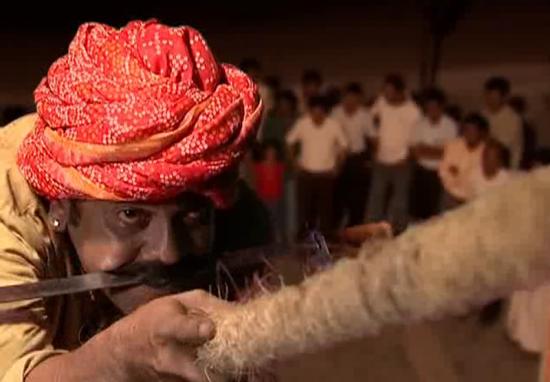
A media artist and film director himself, Agricola is also the founder and of the Cologne Online Film Festival, or CologneOFF, an online festival where I’ve lost more hours than I want to admit watching great art films from all over the world. Agricola describes CologneOFF as a new concept in art cinema – the networked festival – which includes a networked jury, networked contributions, networked screenings, and networked audiences. Now in its fifth year, CologneOFF takes place in the virtual and in the physical simultaneously, first, through the on-demand festival website, and second, through traditional screenings offered by cooperating partner festivals. In addition, each CologneOFF festival, from 2006 to the present, is permanently available for on-demand viewing online.
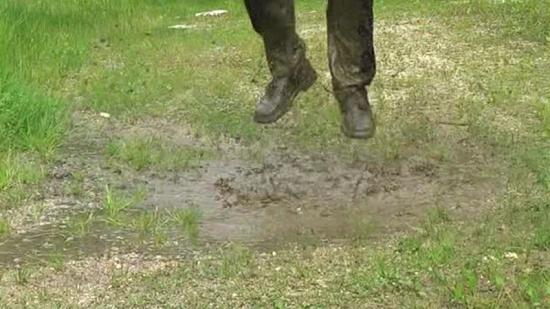
The ideas at work here are simple. If you like art cinema, you can watch some whenever and wherever you like. If you make art cinema, your avenues of distribution are becoming a bit more independent of external influences. If you are an absolute traditionalist, CologneOFF, and other festivals like it, show that programmers and filmmakers may not be able to avoid the Internet audience much longer and that barring online and interactive films from the festival circuit may not be the most forward thinking audience policy. After organizing over a hundred new media festivals, Acgricola questions the agenda of the anti-online curator: “Such a policy will not survive in the end or [it will survive] just as a fossil, since already now the best film and video artists use the Internet for their purposes, and some of them make currently big careers. Nobody honestly cares about some remaining totalitarian structures from the good old days.” Agricola notes that, as the CologneOFF continues, it creates its own rules, and follows those rules more and more.
Whatever your motives, the films are excellent, easily as engaging as the work you might see in a museum or traditional art cinema screening. Some have been shown in galleries. One example, Casey McKee’s cerebral chase film Corporate Warfare (2005), which pits two briefcase carrying, business-suited adversaries in a knock down drag out fight on the escalator to nowhere.

Since its beginnings, CologneOFF’s primary focus has been on films that examine memory and identity. As mentioned earlier, a visit to the festival website will give access to the festival’s earlier themes of identity, image and music, and art cartoons and animation. This year, under the title Taboo!, there was a special emphasis on the issue of prohibitions, the forbidden, and the transgressive.
Filmmakers Jaime Waelchi, Anna F.C. Smith, and Les Riches Douaniers responded with especially disturbing images. In Little Pleasures, Waelchi indulges herself in chewing gum to the point of drooling, choking, pain. Meanwhile, Smith uses Which Came First (2009) to present an ordinary kitchen chore as a scary and destabilizing sexual metaphor, drawing a link between taboo and the everyday household routine.
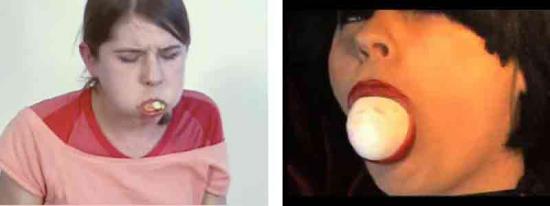
Image: Little Pleasures, Jaime Waelchi, USA (left) and Which Came First?, Anna F.C. Smith, United Kingdom (right)
There are notable works of machinima in this year’s program. If you can bear to watch, the film partnership Les Riches Douaniers remix Grand Theft Auto IV as a squishy critique of avatar indifference in the face of massive multiplayer game violence in their short film Motorized Ordeal (2009).
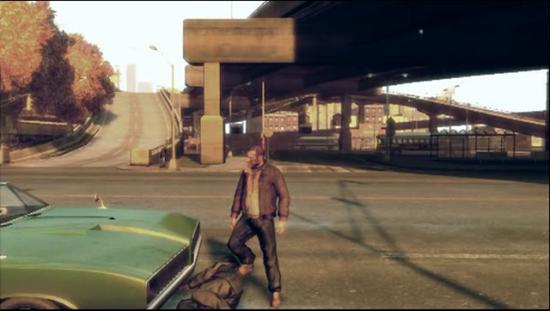
Watching movies as conceptually dense as these made me wonder when the online movie grew up and how it happened so fast. But when asked if this years entries were more complex than perhaps some of the straight plotted narrative entries of earlier years, director Agricola disagreed, reminding me that CologneOFF has always attracted challenging works. Often there is more worthwhile art cinema than even Agricola can present: “There were … too many excellent films submitted. Choosing Taboo! as a topic, we were hoping we would receive less submissions, but in the end we received 203 films and videos. This may … not sound [like] too much, but every work is reviewed several times before a selection is made and reviewing more than 200 films seriously represents a challenge for everybody, especially if so many good submissions come in.”
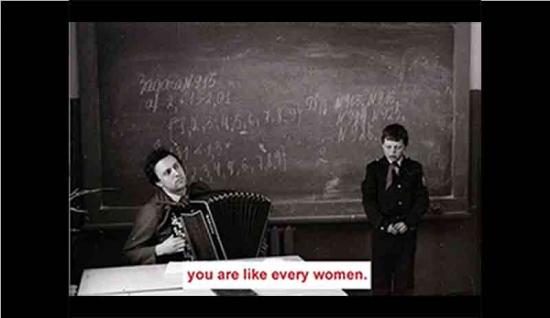
On another note, what is especially exciting is the maturing use of digital effects as an artistic medium in its own right. In Red Star (2009), Milica Rakic overwhelms history by creating a personal memoir of the past that blends archival photography, cut-up titles, and Serbian folk music. Part of the post-MTV generation, Nikesh Shukla assembled his film, The Great Identity Swindle (2008), as a video comic book that literally draws a picture of the taboos he faces as an adolescent Br-Asian. Thinking about the rules of personality led Sibylle Trickes to use video mutiples as an army of her many selves in her film cyclic islands – we and me (2009).
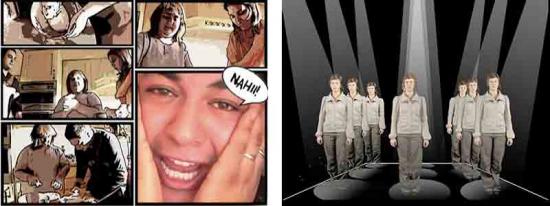
As digital tools move beyond the service of the seamless Hollywood effect to expressive mediums in their own right, what other cinematic forms might emerge from the digital film and the networked festival? Agricola says that technology is advancing so rapidly, he would need to be a fortune teller to predict the future of online cinema. However, he does point out that the Internet has already revolutionized the both viewer behavior and the distribution of art film: “Everybody can determine for himself where and when he wants to enter cultural contexts. I think, the physical live festival and the independent online availability complement each other, and make cultural experience for people, generally, much richer than it has been before ever. The development of cinema needs such different types of approaches, in order to be more attractive and future orientated. Restrictions are there to be overcome.”
by Class Wargames
Saturday 26th September 2009 12-5pm:
Participatory demonstration – Marcel Duchamp meets Blue Peter
Sunday 27th September 2009 12-5pm:
World Premier of Class Wargames film – The Game of War
The Situationist Raoul Vaneigem famously wrote “There are no more artists since we’ve all become artists. Our next work of art is the construction of a full-blooded life.” – The Revolution of Everyday Life.
Debord, strategist of the Situationist International, developed the game while in exile after the May ’68 Revolution, and came to regard it as his most important project. For Debord, The Game of War wasn’t just a game – come and learn how to fight and win against the oppressors of the spectacular society! Join the Class Wargames crew, Richard Barbrook, Fabian Tompsett, Ilze Black and others, in redefining political and contextual territories.
On Saturday the 26th, Class Wargames presents ‘Marcel Duchamp meets Blue Peter’, a day of making and playing Guy Debord’s The Game of War.
Sunday is the World Premier launch of the Class Wargames’ film – The Game of War. Directed by Ilze Black; script writers Richard Barbrook and Fabian Tompsett; xenography by Alex Veness, voice over by Hayley Newman and Alex Veness.
For more information about Class Wargames and players:
http://www.classwargames.net
Marcel Duchamp meets Blue Peter.
Day 1 – 12-5pm Saturday 26th September.
12.00 meet and greet
12.15 introduction by Class Wargames
12.30 building your own game, learning to play and participatory game playing
Film Launch of The Game of War by Class Wargames
Day 2 – 12-5pm Sunday 27th September.
12.00 meet and greet
12.15 View games exhibition and film
14.30 Talk by Class Wargames
15.00 Film launch & drinks
To take part in the game please RSVP to ale[AT]furtherfield[DOT]org
HTTP Gallery
Unit A2, Arena Design Centre
71 Ashfield Road
London N4 1NY
+44(0)79 8129 2734
Click here for map and location details
With thanks to the Arts Council of England for their support.
Inclusive filmmaking workshops to create a documentary challenging community perceptions of Grove Park Special School.
Participants: 20 students between the ages of 10 and 14 from Grove Park Special School in Brent
Artist: Michael Szpakowski (video artist, composer and facilitator)
20 students between the ages of 10 and 14 from Grove Park Special School in Brent explored and challenged community perceptions of the school in a series of visits and interviews with leading figures in the local community. The students, teachers, learning support assistants and Michael Szpakowski worked collaboratively in small groups to make a documentary film about the Borough of Brent, and the people who live and work there. Visits were made to 3 locations over 10 weeks: Brent Town Hall, Fryent Country Park and the nearby IKEA superstore. They were chosen because of their significance as providers of essential local community services. During these visits and interviews the students were encouraged to look outward and find their voices in the local community and throughout this process students and staff had the opportunity to learn valuable filmmaking and editing skills. The project has culminated in a DVD film, for distribution to all participants.
Partners: Creative Partnerships, Grove Park Special School